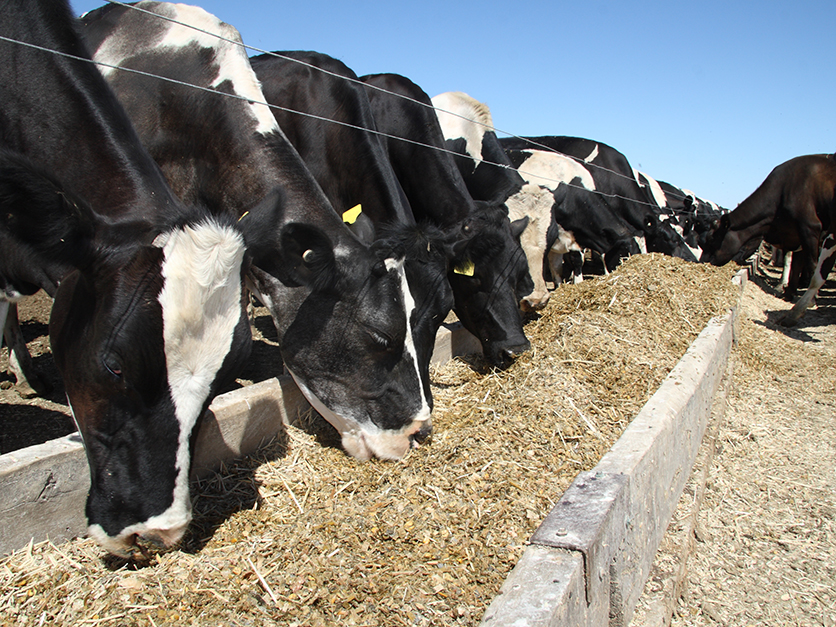When four American dairy industry leaders spoke this week to hundreds of milk producers about what’s needed for future success, they spent their whole hour on two things: expanding export markets and building the trust of U.S. and world consumers.
That’s what leaders of the National Council on Farmer Cooperatives (NCFC), the International Dairy Foods Association (IDFA), the Wisconsin Milk Marketing Board (WMMB) and the Commodity Risk Management Group focused on at the annual Dairy Strong conference in Madison, Wis., when asked to expound on their outlook for milk marketing.
Michael Dykes, IDFA’s top executive, said the U.S. industry has been exporting around 15 percent of milk production as dairy products in recent years, but will need to ship out 20 percent within 10 years to maintain strong markets and avoid surpluses.
“In the last election,” Dykes complained, “the political left and right were lined up on one thing: Trade is horrible for everything . . . and can be blamed for any problems you had.”
But that is hardly what milk producers and others from the trade-oriented dairy sector were suggesting at the conference. CRMG President Mike North, who was moderating, asked the crowd, “How many of you think withdrawing from NAFTA would be a good idea?” Not one hand went up.
To get more folks thinking like dairy producers, Dykes declared, “We’ve got to change these trade discussions to jobs and wages and competitiveness so that people who are hurting (economically) can relate to it.”
Chad Vincent, WMMB chief executive, pointed out that 90 percent of Wisconsin milk becomes cheese, and 90 percent of that cheese leaves Wisconsin. So, with his state's farmers so trade-dependent, Vincent echoed Dykes’ call for expanding exports: “Our job is to make sure demand is going to be greater than supply,” he said of his dairy products promotion entity’s role.
Chuck Conner, an adviser to former president George W. Bush and a former USDA deputy secretary who now heads the NCFC, credited Agriculture Secretary Sonny Perdue with “walking into the Oval Office and saving our bacon” – that is, playing a major role in diverting President Trump from his threat to withdraw the U.S. from the North American Free Trade Agreement (NAFTA).
However, Conner said that the mood of voters, Congress and the White House is not favorable for the kind of trade agreements that will help agriculture. Traditionally, the vast majority of Republicans in Congress have supported trade agreements, along with perhaps 20 Democrats, for example, in the House of Representatives, he said. But fewer than half of today’s House Republicans are likely to vote for a new trade agreement, he estimates, and he expects that a change in voters’ attitudes and legislators’ feelings about trade will be needed for any favorable trade action.
The executives spoke of the dairy checkoff program and other product development and trade promotions as crucial to building domestic and foreign markets, but they stressed the need for dairy farmers and cooperatives to communicate with consumers about their farming practices and products.
Vincent points to dairy promotion programs the WMMB has with the Culver’s restaurants chain and other food marketers. He speaks of “the power and the positivity they have (when displaying) the image ... of dairy farmers. There is nobody trusted more than dairy farmers ... 60 to 75 percent trust approval (by consumers). They love what you do,” he told producers at the conference.
Dykes pointed out that dairy farmers’ mission to communicate with consumers needs to include several elements beyond ensuring healthful, attractive products. “It’s how we care for the animals, how we care for the environment. And I’ll add another: how we care for the people working on the farms. (The latter) is an emerging one, and one we will have to get our arms around. People care about it, and they want to know about it."
Dykes also said he expects the use of traceability systems for dairy and other foods and beverages will continue to increase in this country and abroad. “It will continue to be demanded” to earn consumer confidence in dairy products . . . “and will become an even more important part of food safety,” he said.


